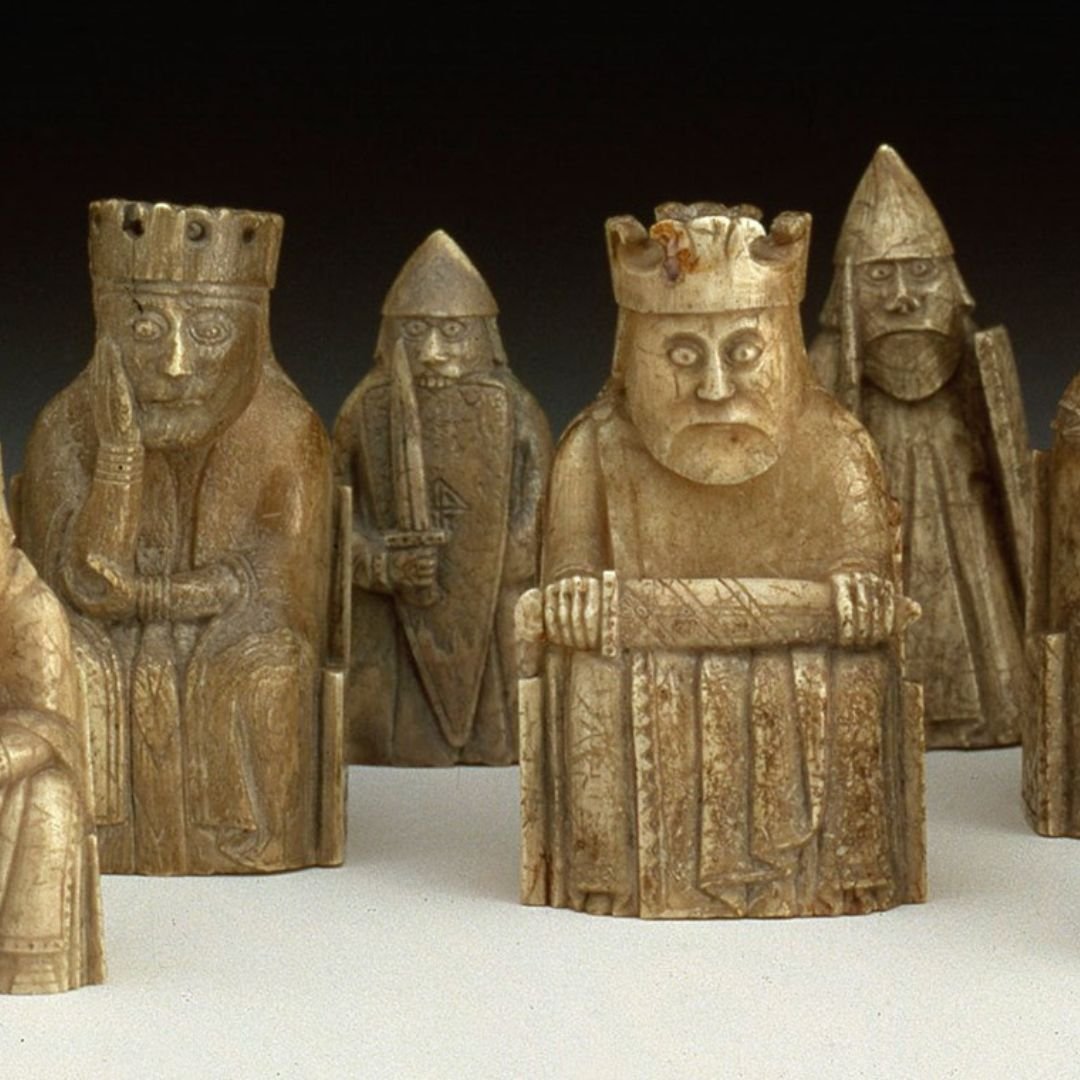The Lewis chessmen: 870 Year Old Chess Pieces Found In Scotland
Made around 1150 (870 years ago), these well preserved chess pieces were discovered on the Isle of Lewis, Scotland.
The Lewis chessmen derive their name from the Scottish island where they were discovered.
These unique 12th century chess pieces, crafted mostly from walrus ivory, were unearthed in 1831 on Lewis, part of the Outer Hebrides in Scotland.
They represent one of the few remaining complete medieval chess sets, though it remains uncertain if a fully intact set can be reconstructed from the pieces.
Originally, the hoard contained 94 items, including 78 chess pieces, 14 tablemen (pieces used in backgammon or similar games), and a solitary belt buckle.
Today, the British Museum in London houses 82 of these pieces, while the National Museum of Scotland in Edinburgh holds the remaining 11; one chess piece is privately owned.
Notably, a recently identified "warder," akin to a rook, fetched £735,000 in July 2019.
However, four other major pieces and numerous pawns are still missing from the chess sets.
In 2001, the chess pieces reached new audiences through the first Harry Potter film, Harry Potter and the Philosopher’s Stone.
In wizard’s chess, the pieces are enchanted and move by themselves.
Near the climax of the film, Ron, Harry and Hermione faced giant versions of the pieces that had been enchanted to protect the Philosopher’s Stone.
The discovery
In early 1831, the chess pieces were unearthed from a sandbank at the head of Uig Bay, located on the west coast of the Isle of Lewis.
The discovery sparked various local tales about their origin and subsequent detection on Lewis.
Malcolm "Sprot" MacLeod (known as Calum an Sprot in Scottish Gaelic) from the nearby township of Pennydonald, stumbled upon the trove in a small stone kist buried in a dune.
He briefly displayed them in his byre before selling them to Captain Roderick Ryrie.
While some stories claim a cow unearthed the treasure, this detail is widely dismissed in Uig as myth.
The eviction of Malcolm MacLeod and his family during the Highland Clearances, following the purchase of the Isle of Lewis by J. Matheson in 1844, transformed the region into sheep farms.
The majority of pieces within the collection are intricately carved from walrus ivory, while a few are crafted from whale teeth.
Among the 79 chess pieces, there are 8 kings, 8 queens, 16 bishops, 15 knights, 13 warders (rooks), and 19 pawns. The heights of the pawns vary from 3.5 to 5.8 cm.
While there are 19 pawns, exceeding the standard set requirement of 16, they exhibit the widest array of sizes among all the pieces.
This discrepancy has led to speculation that the 79 chess pieces may originate from at least five distinct sets.
The pawns, characterised by smaller, geometric shapes such as cylinders and "tombstones," possibly symbolise boundary markers.
Notably, the back-rank pieces feature human figure sculptures.
The knights astride diminutive horses, wielding spears and shields, while the rooks stand as soldiers or "warders" gripping shields and swords; four of these rooks are depicted as frenzied berserkers, gnawing their shields with martial fervour.
Traces of red stain, although now vanished, were discovered on some pieces upon their initial excavation, hinting at a possible differentiation between opposing sides using red and white, rather than the conventional black and white seen in modern chess sets.
Chess is a very old game.
It originated in the Islamic world and by the medieval period its popularity had spread across Europe.
It became an important part of elite medieval society, a way of practising and demonstrating skill and strategy in a war-like setting.
In addition to being a game of strategy, medieval chess often carried symbolic and allegorical significance.
The pieces were sometimes seen as representations of medieval society, with the king and queen symbolising royalty, the bishops representing the church, the knights embodying the military, and so on.
The game was even used as a teaching tool for moral and strategic lessons.
Many of the medieval chess pieces are familiar to those who play the game today.
If you enjoyed this blog post, please follow Exploring GB on Facebook for daily travel content and inspiration.
Don’t forge to check out our latest blog posts below!
Thank you for visiting Exploring GB.



















